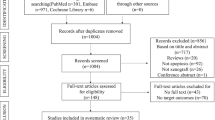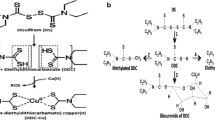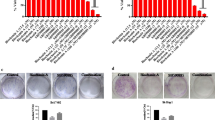Abstract
Cancer is a major health issue worldwide and the global burden of cancer is expected to reduce the costs of treatment as well as prolong the survival time. One of the promising approaches is drug repurposing, because it reduces costs and shortens the production cycle of research and development. Disulfiram (DSF), which was originally approved as an anti-alcoholism drug, has been proven safe and shows the potential to target tumours. Its anti-tumour effect has been reported in many preclinical studies and recently on seven types of cancer in humans: non-small cell lung cancer (NSCLC), liver cancer, breast cancer, prostate cancer, pancreatic cancer, glioblastoma (GBM) and melanoma and has a successful breakthrough in the treatment of NSCLC and GBM. The mechanisms, particularly the intracellular signalling pathways, still remain to be completely elucidated. As shown in our previous study, DSF inhibits NF-kB signalling, proteasome activity, and aldehyde dehydrogenase (ALDH) activity. It induces endoplasmic reticulum (ER) stress and autophagy and has been used as an adjuvant therapy with irradiation or chemotherapy drugs. On the other hand, DSF not only kills the normal cancer cells but also has the ability to target cancer stem cells, which provides a new approach to prevent tumour recurrence and metastasis. Furthermore, other researchers have reported the ability of DSF to bind to nuclear protein localization protein 4 (NPL4), induce its immobilization and dysfunction, ultimately leading to cell death. Here, we provide an overview of DSF repurposing as a treatment in preclinical studies and clinical trials, and review studies describing the mechanisms underlying its anti-neoplastic effects.


Similar content being viewed by others
References
Johansson B (1992) A review of the pharmacokinetics and pharmacodynamics of disulfiram and its metabolites. Acta Psychiatr Scand 369:15–26. https://doi.org/10.1111/j.1600-0447.1992.tb03310.x
Wang Y, Li W, Patel SS, Cong J, Zhang N, Sabbatino F, Liu X, Qi Y, Huang P, Lee H, Taghian A, Li JJ, DeLeo AB, Ferrone S, Epperly MW, Ferrone CR, Ly A, Brachtel EF, Wang X (2014) Blocking the formation of radiation-induced breast cancer stem cells. Oncotarget 5(11):3743–3755
Rae C, Tesson M, Babich JW, Boyd M, Sorensen A, Mairs RJ (2013) The role of copper in disulfiram-induced toxicity and radiosensitization of cancer cells. J Nucl Med 54(6):953–960. https://doi.org/10.2967/jnumed.112.113324
Skrott Z, Mistrik M, Andersen KK, Friis S, Majera D, Gursky J, Ozdian T, Bartkova J, Turi Z, Moudry P, Kraus M, Michalova M, Vaclavkova J, Dzubak P, Vrobel I, Pouckova P, Sedlacek J, Miklovicova A, Kutt A, Li J, Mattova J, Driessen C, Dou QP, Olsen J, Hajduch M, Cvek B, Deshaies RJ, Bartek J (2017) Alcohol-abuse drug disulfiram targets cancer via p97 segregase adaptor NPL4. Nature 552(7684):194–199. https://doi.org/10.1038/nature25016
Wu X, Xue X, Wang L, Wang W, Han J, Sun X, Zhang H, Liu Y, Che X, Yang J, Wu C (2018) Suppressing autophagy enhances disulfiram/copper-induced apoptosis in non-small cell lung cancer. Eur J Pharmacol 827:1–12. https://doi.org/10.1016/j.ejphar.2018.02.039
Barceloux DG (1999) Copper. J Toxicol Clin Toxicol 37(2):217–230. https://doi.org/10.1081/clt-100102421
Denoyer D, Masaldan S, La Fontaine S, Cater MA (2015) Targeting copper in cancer therapy: “copper that cancer.” Metallomics 7(11):1459–1476. https://doi.org/10.1039/c5mt00149h
Chen D, Cui QC, Yang H, Dou QP (2006) Disulfiram, a clinically used anti-alcoholism drug and copper-binding agent, induces apoptotic cell death in breast cancer cultures and xenografts via inhibition of the proteasome activity. Cancer Res 66(21):10425–10433. https://doi.org/10.1158/0008-5472.CAN-06-2126
Dufour P, Lang JM, Giron C, Duclos B, Haehnel P, Jaeck D, Jung JM, Oberling F (1993) Sodium dithiocarb as adjuvant immunotherapy for high risk breast cancer: a randomized study. Biotherapy 6(1):9–12. https://doi.org/10.1007/BF01877380
Lewison EF (1977) Spontaneous regression of breast cancer. Prog Clin Biol Res 12:47–53
Liu P, Kumar IS, Brown S, Kannappan V, Tawari PE, Tang JZ, Jiang W, Armesilla AL, Darling JL, Wang W (2013) Disulfiram targets cancer stem-like cells and reverses resistance and cross-resistance in acquired paclitaxel-resistant triple-negative breast cancer cells. Br J Cancer 109(7):1876–1885. https://doi.org/10.1038/bjc.2013.534
Nechushtan H, Hamamreh Y, Nidal S, Gotfried M, Baron A, Shalev YI, Nisman B, Peretz T, Peylan-Ramu N (2015) A phase IIb trial assessing the addition of disulfiram to chemotherapy for the treatment of metastatic non-small cell lung cancer. Oncologist 20(4):366–367. https://doi.org/10.1634/theoncologist.2014-0424
Schweizer MT, Lin J, Blackford A, Bardia A, King S, Armstrong AJ, Rudek MA, Yegnasubramanian S, Carducci MA (2013) Pharmacodynamic study of disulfiram in men with non-metastatic recurrent prostate cancer. Prostate Cancer Prostatic Dis 16(4):357–361. https://doi.org/10.1038/pcan.2013.28
Corsello SM, Nagari RT, Spangler RD, Rossen J, Kocak M, Bryan JG, Humeidi R, Peck D, Wu X, Tang AA, Wang VM, Bender SA, Lemire E, Narayan R, Montgomery P, Ben-David U, Garvie CW, Chen Y, Rees MG, Lyons NJ, McFarland JM, Wong BT, Wang L, Dumont N, O’Hearn PJ, Stefan E, Doench JG, Harrington CN, Greulich H, Meyerson M, Vazquez F, Subramanian A, Roth JA, Bittker JA, Boehm JS, Mader CC, Tsherniak A, Golub TR (2020) Discovering the anti-cancer potential of non-oncology drugs by systematic viability profiling. Nat Cancer 1(2):235–248. https://doi.org/10.1038/s43018-019-0018-6
Triscott J, Rose Pambid M, Dunn SE (2015) Concise review: bullseye: targeting cancer stem cells to improve the treatment of gliomas by repurposing disulfiram. Stem Cells 33(4):1042–1046. https://doi.org/10.1002/stem.1956
Hald J, Jacobsen E (1948) A drug sensitizing the organism to ethyl alcohol. Lancet 2(6539):1001–1004. https://doi.org/10.1016/s0140-6736(48)91514-1
Cvek B (2012) Nonprofit drugs as the salvation of the world’s healthcare systems: the case of Antabuse (disulfiram). Drug Discov Today 17(9–10):409–412. https://doi.org/10.1016/j.drudis.2011.12.010
Cong J, Wang Y, Zhang X, Zhang N, Liu L, Soukup K, Michelakos T, Hong T, DeLeo A, Cai L, Sabbatino F, Ferrone S, Lee H, Levina V, Fuchs B, Tanabe K, Lillemoe K, Ferrone C, Wang X (2017) A novel chemoradiation targeting stem and nonstem pancreatic cancer cells by repurposing disulfiram. Cancer Lett 409:9–19. https://doi.org/10.1016/j.canlet.2017.08.028
He H, Markoutsa E, Li J, Xu P (2018) Repurposing disulfiram for cancer therapy via targeted nanotechnology through enhanced tumor mass penetration and disassembly. Acta Biomater 68:113–124. https://doi.org/10.1016/j.actbio.2017.12.023
Wang Z, Tan J, McConville C, Kannappan V, Tawari PE, Brown J, Ding J, Armesilla AL, Irache JM, Mei QB, Tan Y, Liu Y, Jiang W, Bian XW, Wang W (2017) Poly lactic-co-glycolic acid controlled delivery of disulfiram to target liver cancer stem-like cells. Nanomedicine 13(2):641–657. https://doi.org/10.1016/j.nano.2016.08.001
Liu P, Wang Z, Brown S, Kannappan V, Tawari PE, Jiang W, Irache JM, Tang JZ, Armesilla AL, Darling JL, Tang X, Wang W (2014) Liposome encapsulated Disulfiram inhibits NFκB pathway and targets breast cancer stem cells in vitro and in vivo. Oncotarget 5(17):7471–7485
Yip NC, Fombon IS, Liu P, Brown S, Kannappan V, Armesilla AL, Xu B, Cassidy J, Darling JL, Wang W (2011) Disulfiram modulated ROS-MAPK and NFkappaB pathways and targeted breast cancer cells with cancer stem cell-like properties. Br J Cancer 104(10):1564–1574. https://doi.org/10.1038/bjc.2011.126
Arora J, Sauer SJ, Tarpley M, Vermeulen P, Rypens C, Van Laere S, Williams KP, Devi GR, Dewhirst MW (2017) Inflammatory breast cancer tumor emboli express high levels of anti-apoptotic proteins: use of a quantitative high content and high-throughput 3D IBC spheroid assay to identify targeting strategies. Oncotarget 8(16):25848–25863
Bista R, Lee DW, Pepper OB, Azorsa DO, Arceci RJ, Aleem E (2017) Disulfiram overcomes bortezomib and cytarabine resistance in Down-syndrome-associated acute myeloid leukemia cells. J Exp Clin Cancer Res 36(1):22. https://doi.org/10.1186/s13046-017-0493-5
Jiao Y, Hannafon BN, Zhang RR, Fung KM, Ding WQ (2017) Docosahexaenoic acid and disulfiram act in concert to kill cancer cells: a mutual enhancement of their anticancer actions. Oncotarget 8(11):17908–17920
Lun X, Wells JC, Grinshtein N, King JC, Hao X, Dang NH, Wang X, Aman A, Uehling D, Datti A, Wrana JL, Easaw JC, Luchman A, Weiss S, Cairncross JG, Kaplan DR, Robbins SM, Senger DL (2016) Disulfiram when Combined with Copper Enhances the Therapeutic Effects of Temozolomide for the Treatment of Glioblastoma. Clin Cancer Res 22(15):3860–3875. https://doi.org/10.1158/1078-0432.CCR-15-1798
Papaioannou M, Mylonas I, Kast RE, Bruning A (2014) Disulfiram/copper causes redox-related proteotoxicity and concomitant heat shock response in ovarian cancer cells that is augmented by auranofin-mediated thioredoxin inhibition. Oncoscience 1(1):21–29
Safi R, Nelson ER, Chitneni SK, Franz KJ, George DJ, Zalutsky MR, McDonnell DP (2014) Copper signaling axis as a target for prostate cancer therapeutics. Cancer Res 74(20):5819–5831. https://doi.org/10.1158/0008-5472.CAN-13-3527
Xu B, Wang S, Li R, Chen K, He L, Deng M, Kannappan V, Zha J, Dong H, Wang W (2017) Disulfiram/copper selectively eradicates AML leukemia stem cells in vitro and in vivo by simultaneous induction of ROS-JNK and inhibition of NF-kappaB and Nrf2. Cell Death Dis 8(5):e2797. https://doi.org/10.1038/cddis.2017.176
Triscott J, Lee C, Hu K, Fotovati A, Berns R, Pambid M, Luk M, Kast RE, Kong E, Toyota E, Yip S, Toyota B, Dunn SE (2012) Disulfiram, a drug widely used to control alcoholism, suppresses the self-renewal of glioblastoma and over-rides resistance to temozolomide. Oncotarget 3(10):1112–1123
Park YM, Go YY, Shin SH, Cho JG, Woo JS, Song JJ (2018) Anti-cancer effects of disulfiram in head and neck squamous cell carcinoma via autophagic cell death. PLoS ONE 13(9):e0203069. https://doi.org/10.1371/journal.pone.0203069
Hassani S, Ghaffari P, Chahardouli B, Alimoghaddam K, Ghavamzadeh A, Alizadeh S, Ghaffari SH (2018) Disulfiram/copper causes ROS levels alteration, cell cycle inhibition, and apoptosis in acute myeloid leukaemia cell lines with modulation in the expression of related genes. Biomed Pharmacother 99:561–569. https://doi.org/10.1016/j.biopha.2018.01.109
Zha J, Chen F, Dong H, Shi P, Yao Y, Zhang Y, Li R, Wang S, Li P, Wang W, Xu B (2014) Disulfiram targeting lymphoid malignant cell lines via ROS-JNK activation as well as Nrf2 and NF-kB pathway inhibition. J Transl Med 12:163. https://doi.org/10.1186/1479-5876-12-163
Huang J, Chaudhary R, Cohen AL, Fink K, Goldlust S, Boockvar J, Chinnaiyan P, Wan L, Marcus S, Campian JL (2019) A multicenter phase II study of temozolomide plus disulfiram and copper for recurrent temozolomide-resistant glioblastoma. J Neurooncol 142(3):537–544. https://doi.org/10.1007/s11060-019-03125-y
Huang J, Campian JL, Gujar AD, Tran DD, Lockhart AC, DeWees TA, Tsien CI, Kim AH (2016) A phase I study to repurpose disulfiram in combination with temozolomide to treat newly diagnosed glioblastoma after chemoradiotherapy. J Neurooncol 128(2):259–266. https://doi.org/10.1007/s11060-016-2104-2
Huang J, Campian JL, Gujar AD, Tsien C, Ansstas G, Tran DD, DeWees TA, Lockhart AC, Kim AH (2018) Final results of a phase I dose-escalation, dose-expansion study of adding disulfiram with or without copper to adjuvant temozolomide for newly diagnosed glioblastoma. J Neurooncol 138(1):105–111. https://doi.org/10.1007/s11060-018-2775-y
Liu P, Brown S, Goktug T, Channathodiyil P, Kannappan V, Hugnot JP, Guichet PO, Bian X, Armesilla AL, Darling JL, Wang W (2012) Cytotoxic effect of disulfiram/copper on human glioblastoma cell lines and ALDH-positive cancer-stem-like cells. Br J Cancer 107(9):1488–1497. https://doi.org/10.1038/bjc.2012.442
Deng M, Jiang Z, Li Y, Zhou Y, Li J, Wang X, Yao Y, Wang W, Li P, Xu B (2016) Effective elimination of adult B-lineage acute lymphoblastic leukemia by disulfiram/copper complex in vitro and in vivo in patient-derived xenograft models. Oncotarget 7(50):82200–82212
Zhang X, Hu P, Ding SY, Sun T, Liu L, Han S, DeLeo AB, Sadagopan A, Guo W, Wang X (2019) Induction of autophagy-dependent apoptosis in cancer cells through activation of ER stress: an uncovered anti-cancer mechanism by anti-alcoholism drug disulfiram. Am J Cancer Res 9(6):1266–1281
Liu X, Wang L, Cui W, Yuan X, Lin L, Cao Q, Wang N, Li Y, Guo W, Zhang X, Wu C, Yang J (2016) Targeting ALDH1A1 by disulfiram/copper complex inhibits non-small cell lung cancer recurrence driven by ALDH-positive cancer stem cells. Oncotarget 7(36):58516–58530
Xu X, Xu J, Zhao C, Hou X, Li M, Wang L, Chen L, Chen Y, Zhu L, Yang H (2019) Antitumor effects of disulfiram/copper complex in the poorly-differentiated nasopharyngeal carcinoma cells via activating ClC-3 chloride channel. Biomed Pharmacother 120:109529. https://doi.org/10.1016/j.biopha.2019.109529
Allensworth JL, Evans MK, Bertucci F, Aldrich AJ, Festa RA, Finetti P, Ueno NT, Safi R, McDonnell DP, Thiele DJ, Van Laere S, Devi GR (2015) Disulfiram (DSF) acts as a copper ionophore to induce copper-dependent oxidative stress and mediate anti-tumor efficacy in inflammatory breast cancer. Mol Oncol 9(6):1155–1168. https://doi.org/10.1016/j.molonc.2015.02.007
Kast RE, Boockvar JA, Bruning A, Cappello F, Chang WW, Cvek B, Dou QP, Duenas-Gonzalez A, Efferth T, Focosi D, Ghaffari SH, Karpel-Massler G, Ketola K, Khoshnevisan A, Keizman D, Magne N, Marosi C, McDonald K, Munoz M, Paranjpe A, Pourgholami MH, Sardi I, Sella A, Srivenugopal KS, Tuccori M, Wang W, Wirtz CR, Halatsch ME (2013) A conceptually new treatment approach for relapsed glioblastoma: Coordinated undermining of survival paths with nine repurposed drugs (CUSP9) by the International Initiative for Accelerated Improvement of Glioblastoma Care. Oncotarget 4(4):502–530
Conticello C, Martinetti D, Adamo L, Buccheri S, Giuffrida R, Parrinello N, Lombardo L, Anastasi G, Amato G, Cavalli M, Chiarenza A, De Maria R, Giustolisi R, Gulisano M, Di Raimondo F (2012) Disulfiram, an old drug with new potential therapeutic uses for human hematological malignancies. Int J Cancer 131(9):2197–2203. https://doi.org/10.1002/ijc.27482
Lewis DJ, Deshmukh P, Tedstone AA, Tuna F, O’Brien P (2014) On the interaction of copper(II) with disulfiram. Chem Commun (Camb) 50(87):13334–13337. https://doi.org/10.1039/c4cc04767b
Tesson M, Anselmi G, Bell C, Mairs R (2017) Cell cycle specific radiosensitisation by the disulfiram and copper complex. Oncotarget 8(39):65900–65916
Skrott Z, Majera D, Gursky J, Buchtova T, Hajduch M, Mistrik M, Bartek J (2019) Disulfiram’s anti-cancer activity reflects targeting NPL4, not inhibition of aldehyde dehydrogenase. Oncogene 38(40):6711–6722. https://doi.org/10.1038/s41388-019-0915-2
Yoshino H, Yamada Y, Enokida H, Osako Y, Tsuruda M, Kuroshima K, Sakaguchi T, Sugita S, Tatarano S, Nakagawa M (2020) Targeting NPL4 via drug repositioning using disulfiram for the treatment of clear cell renal cell carcinoma. PLoS ONE 15(7):e0236119. https://doi.org/10.1371/journal.pone.0236119
Majera D, Skrott Z, Chroma K, Merchut-Maya JM, Mistrik M, Bartek J (2020) Targeting the NPL4 adaptor of p97/VCP segregase by disulfiram as an emerging cancer vulnerability evokes replication stress and DNA damage while silencing the ATR pathway. Cells. https://doi.org/10.3390/cells9020469
Tacconi EM, Lai X, Folio C, Porru M, Zonderland G, Badie S, Michl J, Sechi I, Rogier M, Matia Garcia V, Batra AS, Rueda OM, Bouwman P, Jonkers J, Ryan A, Reina-San-Martin B, Hui J, Tang N, Bruna A, Biroccio A, Tarsounas M (2017) BRCA1 and BRCA2 tumor suppressors protect against endogenous acetaldehyde toxicity. EMBO Mol Med 9(10):1398–1414
Sun T, Yang W, Toprani SM, Guo W, He L, DeLeo AB, Ferrone S, Zhang G, Wang E, Lin Z, Hu P, Wang X (2020) Induction of immunogenic cell death in radiation-resistant breast cancer stem cells by repurposing anti-alcoholism drug disulfiram. Cell Commun Signal 18(1):36. https://doi.org/10.1186/s12964-019-0507-3
Shah O’Brien P, Xi Y, Miller JR, Brownell AL, Zeng Q, Yoo GH, Garshott DM, O’Brien MB, Galinato AE, Cai P, Narula N, Callaghan MU, Kaufman RJ, Fribley AM (2019) Disulfiram (Antabuse) activates ROS-dependent ER stress and apoptosis in oral cavity squamous cell carcinoma. J Clin Med. https://doi.org/10.3390/jcm8050611
Harrington BS, Ozaki MK, Caminear MW, Hernandez LF, Jordan E, Kalinowski NJ, Goldlust IS, Guha R, Ferrer M, Thomas C, Shetty J, Tran B, Wong N, House CD, Annunziata CM (2020) Drugs targeting tumor-initiating cells prolong survival in a post-surgery post-chemotherapy ovarian cancer relapse model. Cancers (Basel). https://doi.org/10.3390/cancers12061645
Schmidtova S, Kalavska K, Gercakova K, Cierna Z, Miklikova S, Smolkova B, Buocikova V, Miskovska V, Durinikova E, Burikova M, Chovanec M, Matuskova M, Mego M, Kucerova L (2019) Disulfiram overcomes cisplatin resistance in human embryonal carcinoma cells. Cancers (Basel). https://doi.org/10.3390/cancers11091224
Chiba T, Suzuki E, Yuki K, Zen Y, Oshima M, Miyagi S, Saraya A, Koide S, Motoyama T, Ogasawara S, Ooka Y, Tawada A, Nakatsura T, Hayashi T, Yamashita T, Kaneko S, Miyazaki M, Iwama A, Yokosuka O (2014) Disulfiram eradicates tumor-initiating hepatocellular carcinoma cells in ROS-p38 MAPK pathway-dependent and -independent manners. PLoS ONE 9(1):e84807. https://doi.org/10.1371/journal.pone.0084807
Dinnen RD, Mao Y, Qiu W, Cassai N, Slavkovich VN, Nichols G, Su GH, Brandt-Rauf P, Fine RL (2013) Redirecting apoptosis to aponecrosis induces selective cytotoxicity to pancreatic cancer cells through increased ROS, decline in ATP levels, and VDAC. Mol Cancer Ther 12(12):2792–2803. https://doi.org/10.1158/1535-7163.MCT-13-0234
Hacker MP, Ershler WB, Newman RA, Gamelli RL (1982) Effect of disulfiram (tetraethylthiuram disulfide) amd diethyldithiocarbamate on the bladder toxicity and antitumor activity of cyclophosphamide in mice. Cancer Res 42(11):4490–4494
Huang H, Liao Y, Liu N, Hua X, Cai J, Yang C, Long H, Zhao C, Chen X, Lan X, Zang D, Wu J, Li X, Shi X, Wang X, Liu J (2016) Two clinical drugs deubiquitinase inhibitor auranofin and aldehyde dehydrogenase inhibitor disulfiram trigger synergistic anti-tumor effects in vitro and in vivo. Oncotarget 7(3):2796–2808
Swetha KL, Sharma S, Chowdhury R, Roy A (2020) Disulfiram potentiates docetaxel cytotoxicity in breast cancer cells through enhanced ROS and autophagy. Pharmacol Rep. https://doi.org/10.1007/s43440-020-00122-1
Terashima Y, Toda E, Itakura M, Otsuji M, Yoshinaga S, Okumura K, Shand FHW, Komohara Y, Takeda M, Kokubo K, Chen MC, Yokoi S, Rokutan H, Kofuku Y, Ohnishi K, Ohira M, Iizasa T, Nakano H, Okabe T, Kojima H, Shimizu A, Kanegasaki S, Zhang MR, Shimada I, Nagase H, Terasawa H, Matsushima K (2020) Targeting FROUNT with disulfiram suppresses macrophage accumulation and its tumor-promoting properties. Nat Commun 11(1):609. https://doi.org/10.1038/s41467-020-14338-5
Zhou B, Guo L, Zhang B, Liu S, Zhang K, Yan J, Zhang W, Yu M, Chen Z, Xu Y, Xiao Y, Zhou J, Fan J, Li H, Ye Q (2019) Disulfiram combined with copper induces immunosuppression via PD-L1 stabilization in hepatocellular carcinoma. Am J Cancer Res 9(11):2442–2455
Verma S, Stewart DJ, Maroun JA, Nair RC (1990) A randomized phase II study of cisplatin alone versus cisplatin plus disulfiram. Am J Clin Oncol 13(2):119–124. https://doi.org/10.1097/00000421-199004000-00007
Funding
This work was supported by the National Natural Science Foundation of China (81872426) and Natural Science Foundation of Jiangsu Province, China (BK20181372).
Author information
Authors and Affiliations
Corresponding author
Ethics declarations
Conflict of interest
The authors declare that they have no conflict of interest.
Additional information
Publisher's Note
Springer Nature remains neutral with regard to jurisdictional claims in published maps and institutional affiliations.
Rights and permissions
About this article
Cite this article
Lu, C., Li, X., Ren, Y. et al. Disulfiram: a novel repurposed drug for cancer therapy. Cancer Chemother Pharmacol 87, 159–172 (2021). https://doi.org/10.1007/s00280-020-04216-8
Received:
Accepted:
Published:
Issue Date:
DOI: https://doi.org/10.1007/s00280-020-04216-8




